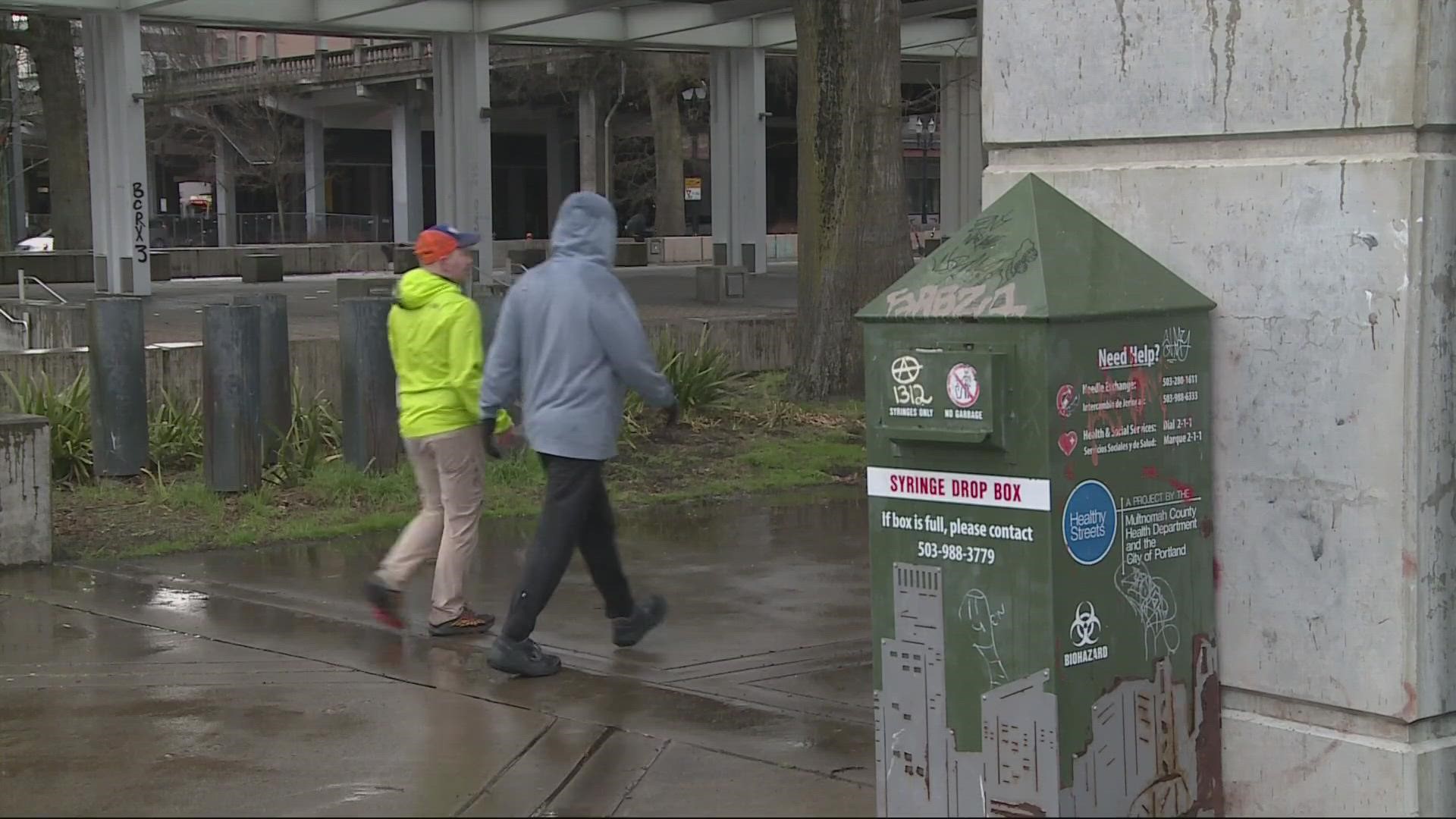PORTLAND, Oregon — The problem of used hypodermic needles littering Portland streets continues to grow, according to the latest numbers from Downtown Portland Clean and Safe.
In 2022, crews collected 176,962 the Downtown Enhanced Service area which covers 213 blocks. The needles came from public right of ways, as well as four drop box sites installed by Multnomah County within the district. The number is staggering in and of itself, but looking at the number of needles collected over the past eight years, the increase is also troubling.
"You see that dramatic change and you really can incrementally follow the opioid crisis through the needles that Clean & Safe has been collecting," said Mark Wells, Executive Director of Downtown Portland Clean & Safe. "Everyone needs to realize the drug crisis we have on our streets. When I'm out with my staff seeing people use drugs openly suffering from addiction, they need help and they deserve help."
The problem is not just in Portland’s downtown. Last year, Metro’s Rid Patrol collected 9,800 used needles from public spaces. The county also placed fourteen additional syringe drop box locations around the city. Metro tells KGW that over the last four years, they've collected a total of 1,480,000 needles from those sites.
"We have got to prioritize drug treatment and be honest with ourselves," Wells said. "It is a city problem, it is a county problem and it is a state problem."
That problem may be evolving, according to another set of needle statistics. Multnomah County's Health Department sets up several syringe exchange sites where people using drugs can trade their used needles for new ones. In 2021, county health officials collected 6,046,408 syringes at those sites. In 2022 they collected 3,248,373 — a dramatic drop from the year before.
"We believe that a lot of that drop is attributed to people switching to smoking Fentanyl," said Kim Toevs, communicable disease and harm reduction director for Multnomah County. "Fentanyl is strong enough to give users the same high from smoking it, as they got from injectable drugs."
For that reason, Toevs said she believes as more people turn to the deadly, synthetic opioid, other needle-tracking statistics may also change.
"I’m curious to see if they decrease even by 2023," Toevs said.

